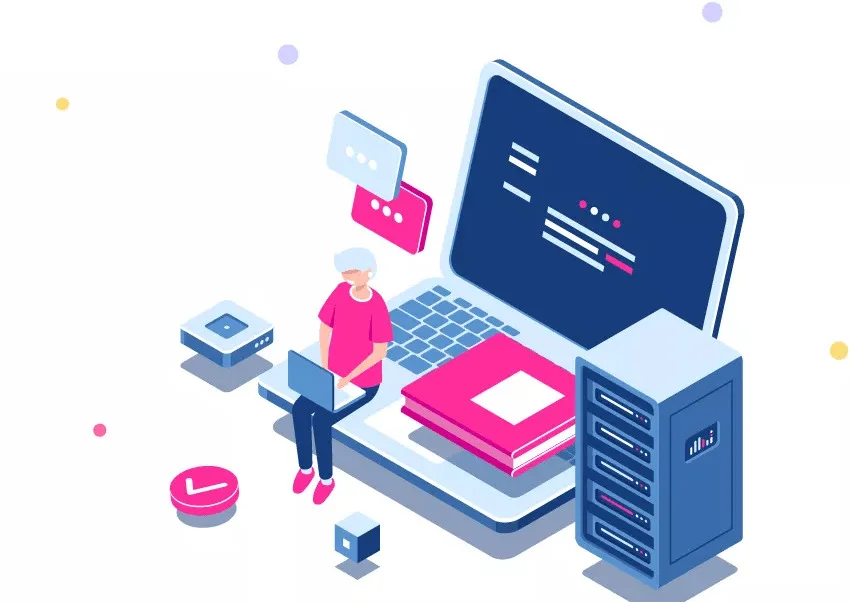No matter how many precautions are taken, IT-related issues are bound to happen. The key to minimizing their impact is having a streamlined process for support and resolution.

One of the most effective ways to achieve this is by setting up a help desk. But what is a help desk, and how can building one benefit your business? This article will explain what is a helpdesk, highlight key features to consider, and explore the advantages of using one.
What is a HelpDesk?
A help desk serves as the first point of contact for both employees and customers when technical assistance is needed.
For employees, the help desk handles tasks like troubleshooting printer problems, enhancing laptop security, or granting access to new systems. For customers, it provides support when they can’t log in, need help with setup, or encounter software bugs. In both cases, the help desk ensures that problems are addressed quickly and effectively.
Help Desk vs Service Desk: Understanding the Difference
Although the terms “help desk” and “service desk” are often used interchangeably, they are not identical.
- A help desk has its roots in IT-focused support, primarily aimed at resolving technical issues.
- A service desk, on the other hand, takes a broader, service-oriented approach. Its focus extends beyond troubleshooting to include delivering overall IT services and enhancing customer experience.
In short, a help desk focuses on issue resolution, while a service desk emphasizes service delivery and customer-centric support. For many organizations, starting with a help desk is an excellent first step toward a more structured and organized IT support system.
What Does a Help Desk Do?
Help desks simplify the process of logging, tracking, and resolving IT support tickets. For example, when a ticket is submitted through a system like Jira Service Desk, it is recorded, assigned, and monitored until resolution.
The help desk is responsible for managing these issues efficiently, whether they come from internal staff or external customers using your products and services. By providing a centralized system for handling requests, a help desk ensures that technical problems are resolved quickly, keeping both employees and customers satisfied.
Key Features to Look for in a Help Desk
Choosing the right help desk software means finding a solution with features that not only solve problems but also streamline workflows and improve efficiency. From SLA management to automation, here are some of the most valuable features to consider.
- Email Support
A strong help desk system allows support emails (e.g., [email protected]) to be automatically converted into tickets. This ensures customer inquiries are organized in a structured ticketing workflow, giving agents a clear process to follow.
- Knowledge Base
A built‑in knowledge base provides users with quick access to FAQs, step‑by‑step guides, and best practices. By offering a self‑service option, it reduces the number of support requests while improving customer satisfaction.
- Self‑Service Portal
A user‑friendly self‑service portal lets customers submit tickets or find instant answers in the knowledge base. This empowers users to resolve common issues without waiting for direct assistance.
- Community Forums
Community forums give users a space to ask questions and share solutions. Peer‑to‑peer support not only helps resolve issues faster but also fosters a sense of community around your product or service.
- Reporting and Analytics
Comprehensive reporting tools allow businesses to monitor agent performance, track support costs, and measure customer satisfaction. With detailed analytics, organizations can identify trends and continuously improve service quality.
- Help Desk Automation
Automation helps reduce manual work by handling routine tasks. For instance, inactive tickets can be closed automatically, or managers can receive alerts when a high‑priority issue is logged. This saves time and ensures consistency in support.
- SLA/SLO Management
Service Level Agreements (SLAs) and Service Level Objectives (SLOs) set clear expectations for response and resolution times. SLOs can also measure quality targets, such as maintaining customer satisfaction above a certain percentage. These agreements hold teams accountable and ensure customers receive reliable service.
- Customization
The best help desk platforms allow businesses to customize branding with their own colors, logos, and layouts. Many also support custom integrations, enabling organizations to expand functionality based on unique needs.
- Integration with Existing Tools
Integration with tools you already use can enhance overall efficiency. For example, connecting the help desk with Slack allows employees to submit tickets directly within the platform. Pairing with Confluence can help visualize tickets in the context of larger projects. The ability to integrate ensures the help desk works seamlessly within your existing IT service management ecosystem.
Benefits of Using a Help Desk
Whether powered by automation through a virtual agent or managed manually by IT staff, a help desk provides significant value for organizations. From faster resolution times to scalable operations, here are the key benefits of implementing a help desk system.
1. Faster Issue Resolution
One of the most immediate benefits of a help desk is quicker problem-solving. IT-related issues can interrupt workflows and reduce efficiency across the organization. With a help desk in place, tickets are logged, tracked, and resolved faster—helping employees stay focused on their tasks. Quicker resolutions also reduce the overall cost of IT support by minimizing downtime.
2. Improved Customer Satisfaction
For end users, technical issues can directly affect their experience with your products or services. A help desk ensures problems are tracked and resolved efficiently, creating a smoother customer experience. When systems function reliably, customers are more likely to view your company positively and remain loyal.
3. Better Team Productivity
A well-run help desk contributes to improved productivity across the board. By ensuring that systems, tools, and software remain updated and functional, employees can perform their work without unnecessary interruptions. In addition, streamlined IT support fosters a positive workplace environment, helping employees thrive.
4. Scalable Support Operations
As a business grows, so do the demands on its IT infrastructure. Help desk software is designed to scale alongside growth, supporting additional users, requests, and workflows. Platforms like Jira Service Management allow businesses to customize their service desk, adding new channels and processes to maintain efficiency as support needs evolve.
Types of Help Desks
Different types of help desks serve different needs, making it possible for both IT and non-IT teams to provide structured support.
- IT Support Help Desk
Focused on internal staff, the IT support help desk handles issues ranging from routine password resets to critical network outages, ensuring smooth day-to-day operations.
- Customer Service Help Desk
This type of help desk supports external customers, addressing questions and resolving problems related to purchased products or services. It plays a crucial role in maintaining customer trust and satisfaction.
- Business Help Desk
Beyond IT, other departments such as HR, finance, and legal can implement help desks to streamline their processes. Examples include:
- HR: Managing payroll changes, employment verification requests, and benefits questions
- Finance: Handling accounts payable and expense inquiries
- Legal: Responding to contract review requests
By expanding beyond IT, business help desks create more efficient internal support systems across various departments.
Conclusion
A reliable help desk doesn’t just solve IT problems—it saves time, boosts productivity, and keeps both employees and customers happy. As your business grows, the right help desk software will scale with you and deliver even greater value.
Looking for a solution that fits your needs? Check out our recommended help desk platform to streamline your support and grow smarter.


